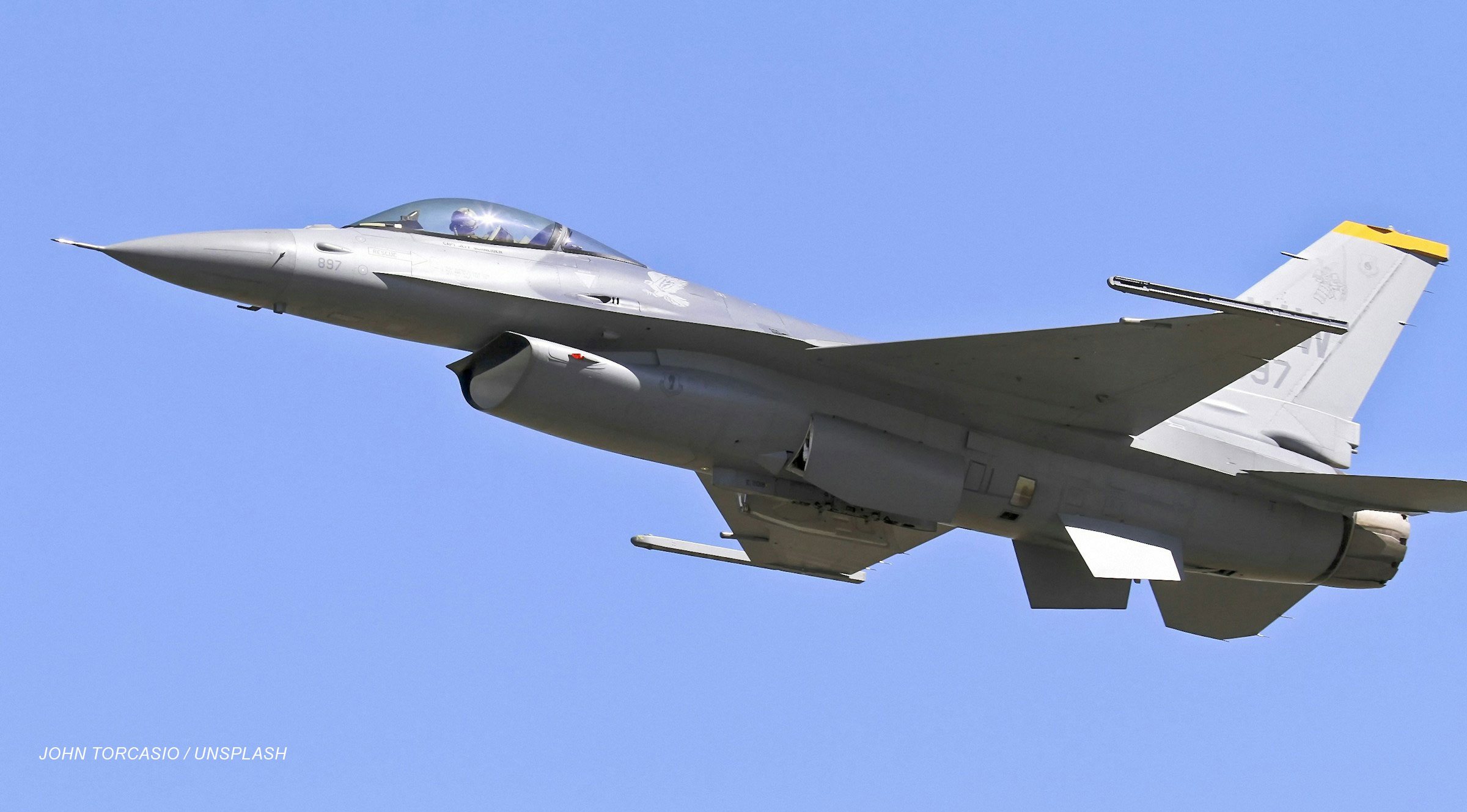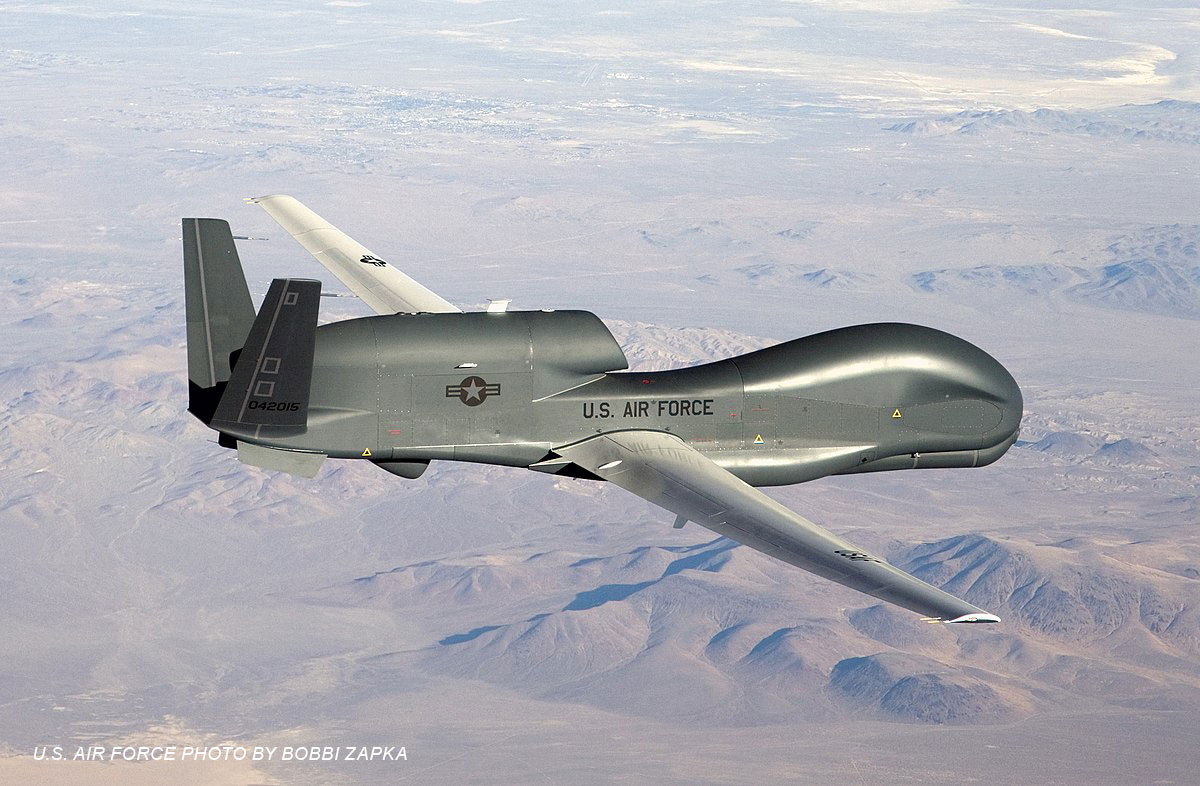Leveraging Commercial AI Technologies For Faster Insights: A New Innovation Strategy For National Security

Imagine this scenario: After a widespread shortage in maintenance staffing, the Lackland Air Force Base in Texas has rounded up a fresh batch of new recruits to work underneath experienced maintainers. A newly minted maintainer joins a crew of seasoned personnel, tasked with ensuring an F-16 Fighter Wing is mission ready. The new recruit utilizes prescriptive artificial intelligence (AI)-based technology to analyze operational data collected from the F-16’s numerous components—as well as unstructured formats including handwritten notes and maintenance manuals—and discovers an impending landing gear strut failure. By utilizing proven commercial technology and harnessing the power of data, the alert enabled the crew to fix the problem and avert disaster, preventing any potential danger mid-flight as well as avoiding costly downtime repairs.
While this scenario seems futuristic, today’s AI technologies have ushered in a new era of opportunity for making this a reality for the Department of Defense (DoD). How quickly that can happen is of critical importance to the competitiveness of the US military in the 21st century. This urgency is clearly outlined in the National Security Commission on Artificial Intelligence’s (NSCAI) final report, stating that the US must be AI-ready by 2025, and a big part of achieving that goal is establishing data readiness and leveraging what we’ve learned from AI implementation in the commercial space.
Even though the DoD has more data than ever before, the presence of unstructured data—comprising roughly 80% of the data available to the DoD—prevents government organizations from gaining immediate, actionable insights to streamline decision-making. Prescriptive analytics, natural language processing, and a host of other technologies utilized in commercial AI deployments across industries have proven that companies can build a high-quality data foundation and overcome this challenge. The DoD can overcome this challenge as well by leveraging the same technologies used in proven commercial deployments. As an AI startup focused on the federal and national security market, we have developed a suite of solutions powered by commercially deployed products that have made a significant impact on the industrial sector since 2013.
Leveraging Commercial Market Learnings to Solve the Data Readiness Challenge
For example, our parent company has solved this data readiness challenge in comparably austere environments like offshore oil and gas platforms. SparkCognitionTM worked with an exploration and production (E&P) operator to identify non-productive time and invisible lost time associated with rig activity logs – a form of unstructured data that makes it difficult for humans to extract meaningful insights. To reduce operating costs and frequent errors, the operator leveraged SparkCognition’s natural language processing (NLP) solution to help understand and categorize the unstructured data from activity logs—essentially a small town library’s worth of data.
Ultimately, the operator was able to automate the process of retrieving information from natural language content in written documents, images, and logs; classifying the documents; and content analytics. The NLP software used this data to categorize rig activity by labeling each activity with a code and sub-code, providing new insights into the most frequently occurring activities on the oil rig with high accuracy. With this information, the operator was able to more effectively pinpoint non-productive time and invisible lost time, as well as their causes.
In another instance, SparkCognition worked with a petrochemical manufacturing company to increase safety and reliability across its plants by identifying operational inefficiencies and impending failures associated with industrial pumps. With a limited data set and no labeled failure data, data scientists used an unsupervised learning approach to find patterns in the unlabeled data so that a subject matter expert could interpret and label them appropriately. Only having a few months’ worth of training and testing data, SparkCognition’s predictive analytics software was able to identify precursors to pump behavior, allowing operators to avert accidents and plan repairs ahead of time.
Ultimately, these deployments, among others, enabled commercial customers to produce better insights at speed and scale instead of manually completing mundane data tasks. The DoD can—and should—enjoy similar benefits when taking its vast data resources and preparing them for use across a diverse set of missions. SparkCognition Government Systems has proven this is possible by tailoring these commercially deployed products specifically to support defense and government customers’ full spectrum of operations and enhance warfighter readiness.
How SGS Approaches the Data Readiness Challenge
Widespread adoption of AI technologies will enable defense aviation maintenance crews to improve reliability, increase operational readiness, and take advantage of training opportunities. Over the past year, we’ve applied our Digital Maintenance Advisor (DMA) product—which leverages commercially proven prescriptive analytics and natural language processing software—to optimize aircraft maintenance tasks, provide visibility into fleetwide maintenance backlogs, and maximize aircraft availability.
In this use case, the DMA product sifted through 18 years’ of maintenance data from 743 F-15s comprising 300,000 maintenance events. The DMA product used only 4% of the data to create a 95% accurate classifier that learned maintainer jargon for problems and fixes from the records, and identified which actions best resolved the problems. It also identified common practices that waste budget and reduce available component stocks, such as unnecessarily swapping a line-replaceable unit box, which triggers depot level inspections, when a reset would have sufficed. This allowed operators to more quickly resolve their jobs, and enabled fleet maintenance leadership to increase readiness by identifying and reducing the unnecessary actions.
Recently, SGS has expanded the DMA product to support F-16 aircraft maintenance. While our work with the F-15 was only a prototype—garnering significant results, no less—our ongoing F-16 work is an actual deployment. For example, the DMA product was deployed across seven critical subsystems, or physical components, rather than just one we tested on the F-15. In addition, the DMA product analyzed and ingested data from two databases associated with the F-16 rather than a single database associated with the F-15, which will enable the solution to deliver actionable insights and meaningful results at greater scale. Beyond aircraft, we are leveraging proven commercial technologies to enhance resource planning and decision optimization to ensure our nation’s ability to act when needed in the most effective and efficient manner possible.
As the DoD recognizes the strategic potential of its data and the benefits of leveraging commercially proven technologies, it will be able to tackle national security’s most pressing challenges much faster compared to current approaches. Contact us to learn more about how we’re solving the DoD’s data readiness challenge with proven commercial AI technologies.
Recent Posts

Redefining Contested Logistics: How AI Can Optimize the Navy’s Refueling Operations

America’s Great-Power Opportunity: Author Ali Wyne’s Visit to HyperWerx

AI empowers logistics and readiness for Army 2030

Realizing the impact of AI in autonomous warfare
